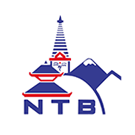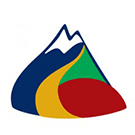Drinking water straight from taps or streams in Kanchenjunga is unsafe. It’s best to use a water purifier or SteriPen. Mineral water is scarce and can be costly on the trail. To help reduce plastic waste, bring a refillable water bottle. Teahouse lodges offer boiled water for a nominal fee.
Archives: FAQ
How cold does it get at night in Kanchenjunga Circuit Trek?
Nighttime temperatures in the area can reach as low as -10°C (14°F), while daytime temperatures are generally warm. The temperature variations may occur based on the specific month.
How difficult is the Kanchenjunga Base Camp Trek?
The Kanchenjunga Base Camp trek is challenging, requiring excellent fitness due to steep paths, rocky terrain, narrow trails, and altitudes exceeding 5,000 meters. Daily walks are 8-9 hours, and altitude sickness is a significant concern.
However, with proper training, preparation, and the right gear, it can be a fulfilling experience. It’s crucial to book with a sustainable and reliable trekking company offering experienced guides. This trek is meant for experienced and fit trekkers, involving remote, rugged terrain, high mountain passes, and altitude challenges.
Lasting at least three weeks, the trek demands physical and mental stamina, with cold weather at high altitudes. Despite its challenges, it’s a rewarding journey. Ensuring thorough preparation and fitness is essential. For a secure and enjoyable trip, consider reaching out to the travel experts at Nepal Sanctuary Treks.
What types of food can trekkers expect to find in the Kanchenjunga region?
In the Kanchenjunga region, the food is similar to other trekking areas in Nepal, featuring potatoes, rice, noodles, soups, and seasonal vegetables. Teahouses provide both Nepalese and Western options, such as Dal Bhat, noodles, soups, and momos. Breakfast options include cereals, bread, and eggs. It’s best to avoid meat dishes due to concerns about freshness.
What kind of accommodations are available along Kanchenjunga Circuit Trek?
Tea house trekking is popular in Kanchenjunga. Every stop has tea houses for meals and lodging. Some places offer rooms with attached toilets, while higher up, rooms are basic but clean and toilets and showers are outside. Rooms typically have 2 beds, some 3 to 4. Facilities in teahouses during the Kanchenjunga Trek include beds, blankets, and shared bathrooms, varying with altitude and location.
How hard is it to get internet, electricity, and phone connections in Kanchenjunga?
What permits are necessary for the Kanchenjunga trek?
Two permits are essential: the Restricted Area Permit and the Conservation Area Permit. These permits are only granted when there are a minimum of two trekkers. Valid Kanchenjunga trekking permits are mandatory for all trekkers embarking on a journey to the Kanchenjunga region, comprising the Restricted Area Permit and the Conservation Area Permit.
What are the accommodations like during Annapurna Base Camp trek?
Nepal Sanctuary Treks selects sustainable teahouse lodges run by locals for your trek. These lodges, while simple, provide a communal area with a heating stove and basic bedrooms with mattresses, pillows, and blankets. It’s advisable to bring a 3-season sleeping bag. Facilities include gas-powered showers and flush toilets, with hot showers available for an extra fee.
How physically challenging is the Annapurna Base Camp Trek in Nepal compared to other treks in the region?
Annapurna Base Camp Trek in Nepal is considered a moderate trek that doesn’t demand extreme physical fitness. While it doesn’t require high levels of physical fitness, a certain level of endurance is necessary to complete the trek. Compared to other trekking destinations, the risk of altitude sickness is relatively low, and you’ll typically walk for 6-7 hours a day.
We suggest preparing your body for high altitudes with intense training and exercise, ideally starting three months before your trek. Building muscle strength will help you endure long hours of walking, and consistent training will also help you mentally prepare. Consider incorporating short uphill runs into your training routine and focus on improving your breathing.
What are the emergency evacuation options in case of severe illness or injury?
In case of a medical emergency, helicopters can be used for evacuation from higher altitudes to Kathmandu with better medical facilities. Make sure you have adequate travel insurance that covers emergency evacuations.
Is drinking water readily accessible during the Annapurna Base Camp trek?
The Annapurna Base Camp trek has many water sources for refilling your bottles. However, it’s important to purify the water before drinking, either with purification tablets or a filter. Additionally, teahouse lodges offer boiled water for a small fee.
Can I rent or buy trekking equipment in Nepal?
Can I trek Annapurna Base Camp during the monsoon season?
During the monsoon season, from June to mid-September, heavy rainfall and the potential for landslides are common. Trails may become slippery, and mountain views can be hidden by clouds. Therefore, we do not recommend trekking during this period.
Can I extend the Annapurna Base Camp trek to other areas or combine it with other treks?
Yes, the Annapurna region has numerous trekking options. You can extend your trek to include the Annapurna Circuit or explore nearby destinations such as Ghorepani and Poon Hill.
What is the daily trekking distance and duration for the Annapurna Base Camp trek?
On average, you’ll trek for 5-7 hours each day, covering about 10-15 kilometers (6-9 miles). The exact distance and duration may vary depending on your pace and the itinerary you choose.








